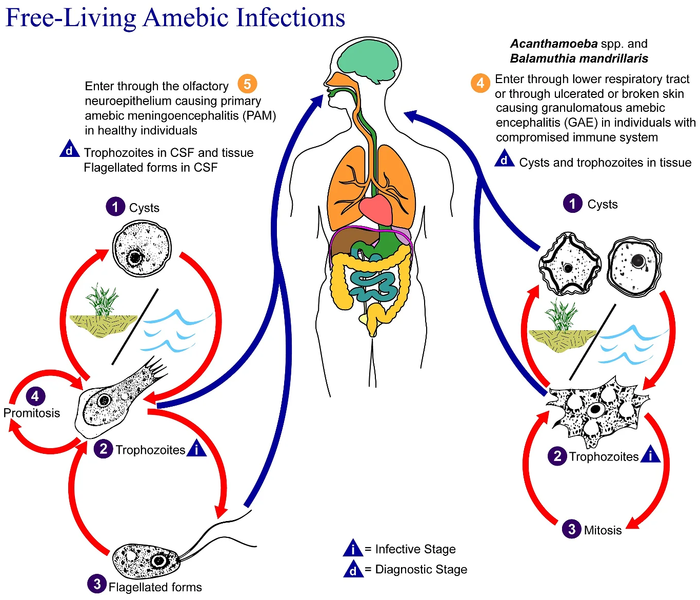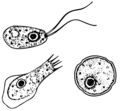Dosya:Free-living amebic infections.png

Bu önizlemenin boyutu: 700 × 600 piksel. Diğer çözünürlükler: 280 × 240 piksel | 560 × 480 piksel | 896 × 768 piksel | 1.195 × 1.024 piksel | 1.365 × 1.170 piksel.
Tam çözünürlük ((1.365 × 1.170 piksel, dosya boyutu: 715 KB, MIME tipi: image/png))
Dosya geçmişi
Dosyanın herhangi bir zamandaki hâli için ilgili tarih/saat kısmına tıklayın.
| Tarih/Saat | Küçük resim | Boyutlar | Kullanıcı | Yorum | |
|---|---|---|---|---|---|
| güncel | 09.24, 2 Şubat 2023 |  | 1.365 × 1.170 (715 KB) | Materialscientist | https://answersingenesis.org/biology/microbiology/the-genesis-of-brain-eating-amoeba/ |
| 06.30, 20 Temmuz 2008 |  | 518 × 435 (31 KB) | Optigan13 | {{Information |Description={{en|This is an illustration of the life cycle of the parasitic agents responsible for causing “free-living” amebic infections. For a complete description of the life cycle of these parasites, select the link below the image |
Dosya kullanımı
Bu görüntü dosyasına bağlanan sayfa yok.
Küresel dosya kullanımı
Aşağıdaki diğer vikiler bu dosyayı kullanır:
- de.wikibooks.org üzerinde kullanımı
- en.wiktionary.org üzerinde kullanımı
- fi.wikipedia.org üzerinde kullanımı
- fr.wikipedia.org üzerinde kullanımı
- gl.wikipedia.org üzerinde kullanımı
- hr.wikipedia.org üzerinde kullanımı
- is.wikipedia.org üzerinde kullanımı
- it.wikipedia.org üzerinde kullanımı
- pl.wikipedia.org üzerinde kullanımı
- te.wikipedia.org üzerinde kullanımı
- vi.wikipedia.org üzerinde kullanımı
- www.wikidata.org üzerinde kullanımı
- zh.wikipedia.org üzerinde kullanımı



